Posted on
June 22, 2018 by
Joe Fleming
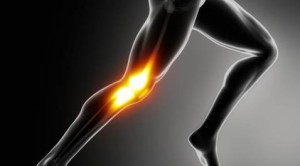 Anterior cruciate ligament (ACL) injuries are some of the most common injuries that athletes experience. Even professional athletes like women’s soccer champion Alex Morgan and Broncos cornerback Chris Harris, Jr. have struggled to recover from torn ACLs.
Anterior cruciate ligament (ACL) injuries are some of the most common injuries that athletes experience. Even professional athletes like women’s soccer champion Alex Morgan and Broncos cornerback Chris Harris, Jr. have struggled to recover from torn ACLs.
Whether you’re a recreational athlete or someone whose hoping to go pro, it pays to know how to prevent and treat an ACL injury. Read on to learn more about this injury and what you can do to avoid being sidelined by it.
What is an ACL Injury?
The anterior cruciate ligament is a major stabilizing and supporting ligament in the knee. It’s responsible for connecting the femur (thigh bone) and tibia (shin bone). The ligament is located in the front of the knee, right above the top of the shin bone and behind the patella (kneecap).
An ACL injury is technically a type of sprain. As with other types of sprains, there are grades of a sprained knee that determine how serious the injury is.
ACL injuries can be broken down into three different grades:
-
Grade 1 — 10 percent or less of the ligament fibers are torn
-
Grade 2 — 11-90 percent of the ligament fibers are torn
-
Grade 3 — more than 90 percent of the ligament fibers are torn and the ligament has completely ruptured
Almost any athlete can suffer from an ACL injury, but athletes who do a lot of jumping or have to stop and/or change directions suddenly are more likely to experience damage to their ACL. Basketball players, soccer players, tennis players, downhill skiers, volleyball players, and gymnasts tend to experience the greatest number of ACL injuries.
Symptoms of an ACL Injury
An ACL injury is typically characterized by a loud “popping” sound or sensation in the knee. Many people also experience swelling, instability, loss of range of motion, and pain when trying to bear weight. Read the rest of this entry →
Tags: ACL injuriesSports Medicine
Category
Health & Fitness, Sports Medicine
Posted on
April 30, 2018 by
Joe Fleming
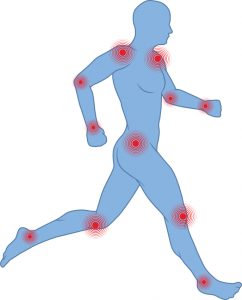 Among all kinds of athletes, both professional and recreational, tendinopathy (also known as tendinitis) is one of the most common injuries.
Among all kinds of athletes, both professional and recreational, tendinopathy (also known as tendinitis) is one of the most common injuries.
About one-third of runners suffer from Achilles tendinopathy, as will approximately 14 percent of volleyball players. Soccer players are also susceptible to tendinopathy, and athletes who frequently participate in overhead maneuvers (serving, pitching, etc.) are four times more likely to deal with tendinopathy compared to other athletes. Kobe Bryant famously tore his Achilles tendon in 2013 in a game against the Golden State Warriors, sidelining his season for nearly 8 months.
If you play one of these sports, or are an active person in general, it’s important to understand what can be done to prevent and treat tendinopathy. Read on to learn more about this condition and the steps you can take to keep it at bay while you continue to play your favorite sports.
What is Tendinopathy?
Tendons are tissues that connect the muscles to the bones. They bear the weight of muscles and allow the joints of the body to move freely.
Tendinopathy occurs when the tendon becomes inflamed. Repetitive motions — swinging a tennis racquet or golf club, for example — often cause tendinopathy in athletes.
The most common sites of tendinopathy include the shoulders, biceps, and elbows (tendinopathy of the elbow is often referred to as tennis elbow). Read the rest of this entry →
Tags: Sports MedicineTendinopathy
Category
Health & Fitness, Sports Fitness
Posted on
December 17, 2017 by
Kara Masterson
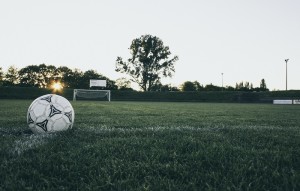 There’s a saying about horseplay that goes, “it’s all fun and games until someone gets hurt.” This also applies to playing sports. While sports injuries can come from a variety of causes, such as an unfortunate collision with another player or a wrong turn of an ankle, they need to be treated as soon as possible. Here are four tips on how to recover quickly from a sports-related injury.
There’s a saying about horseplay that goes, “it’s all fun and games until someone gets hurt.” This also applies to playing sports. While sports injuries can come from a variety of causes, such as an unfortunate collision with another player or a wrong turn of an ankle, they need to be treated as soon as possible. Here are four tips on how to recover quickly from a sports-related injury.
Get Medical Attention Right Away
There’s no sense in delaying things when it comes to a sports injury. Regardless of whether it’s a sprain, a twist, or a broken bone, it needs to be attended to immediately. Issues such as concussions can be especially physical traumatic and need to be dealt with as soon as possible. Even if an injury seems rather benign, it should still be looked over by a professional who can give the best assessment possible.
Relax
Healing is possible following a sports injury, but you need to make sure you give your body time to heal. Whatever part was injured, you need to make sure it’s properly rested. If it needs a cast or a sling, it should stay in there as long as the doctor requires it to. Even if you feel ready to get back into athletics, you should wait until you have the proper medical clearing to do so. Read the rest of this entry →
Tags: soccerSports Medicine
Category
soccer, Sports Fitness, Sports Medicine
Posted on
November 12, 2017 by
Rachelle Wilber
 Athletes face many challenges not only in their sport of choice but also in everyday life. Consequently, these challenges can affect their performance both on and off the field, whether male or female. Therefore, not only do they need the help of their coaches, but also of counselors to help them navigate their everyday lives.
Athletes face many challenges not only in their sport of choice but also in everyday life. Consequently, these challenges can affect their performance both on and off the field, whether male or female. Therefore, not only do they need the help of their coaches, but also of counselors to help them navigate their everyday lives.
The Role of Coaches
Coaches deal with their players on an everyday basis. Consequently, they play a significant role in their athletes’ lives and spend a lot of time with their players. Coaches are responsible for training athletes on the skills and techniques for the given sport. As such, coaches should be equipped a master’s degree in coaching, and with both leadership and technical skills to manage their athletes’ performance. To ensure they are in the best physical shape, coaches follow up on athletes’ diets, training regimen and general well-being. Coaches should be duly trained on the best knowledge and skills essential for bringing out the best performance in an athlete. A coach should also foster a sense of community, confidence, and teamwork for their team if they are dealing with a team sport.
Individual Sports
Even when dealing with individual sports, the coach is still responsible for ensuring athletes are in the best physical and mental conditions to handle competition. Good coaches contribute to the confidence levels exuded by players both on and off the field. It is, therefore, the responsibility of the coach to ensure he/she has a good working relationship with their athletes. Read the rest of this entry →
Tags: fitnesshealthSports Medicine
Category
Sports Fitness, Sports Medicine
Posted on
October 17, 2017 by
Dixie Somers
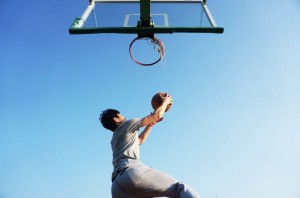 Engaging in sports provides the exercise the body needs, in an enjoyable manner that also fosters regular interaction with other people. These qualities explain why it is one of the most popular ways of staying fit and healthy. However, many sports include the risk of injury, usually from various sprains and strains that occur during play. You can prevent many of these injuries by taking proactive measures to protect your joints and muscles against overuse. Here are a few tips for staying injury-free and ready for play.
Engaging in sports provides the exercise the body needs, in an enjoyable manner that also fosters regular interaction with other people. These qualities explain why it is one of the most popular ways of staying fit and healthy. However, many sports include the risk of injury, usually from various sprains and strains that occur during play. You can prevent many of these injuries by taking proactive measures to protect your joints and muscles against overuse. Here are a few tips for staying injury-free and ready for play.
Do Warm-up Stretches
You can prevent common injuries, such as ankle sprains, back strains and groin pulls by doing a series of warm-up exercises that work your body sufficiently to improve blood flow that helps protect muscles. Stretches, jogging in place, knee bends and other gentle exercises help to prepare your body for a vigorous physical workout.
Provide Proper Support
If you have an ankle that tends to give out or a knee that sometimes fails, use an elastic brace or Rock tape to provide additional support. Proper bracing can help to avoid sprains and dislocations that can keep you out of the game for long periods of time. If you are engaged in a sport that poses a risk for tooth injuries, use a mouth guard to prevent damage to teeth that can result in the need for extensive dental work. A simple elbow to the mouth could result in something as serious as the need for a root canal. Read the rest of this entry →
Tags: Sports InjuriesSports Medicine
Category
Sports Fitness, Sports Medicine
Posted on
July 10, 2017 by
Kara Masterson
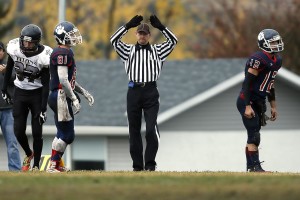 Playing a sport can help you stay in shape, stay connected with friends and have fun at the same time. If you have been injured, you may be tempted to play through the pain or come back too soon. These are both bad ideas. What are some good ways to manage your sports injuries?
Playing a sport can help you stay in shape, stay connected with friends and have fun at the same time. If you have been injured, you may be tempted to play through the pain or come back too soon. These are both bad ideas. What are some good ways to manage your sports injuries?
See Your Doctor
The first thing that you should do is see your doctor and get a proper diagnosis of your injury. After determining the extent of the damage done to your body, he or she can create a timeline to returning to play. If the injury is a minor one, you may just need to rest or limit the amount of time spent on the field for a few days. If the injury is a major one, it may require months of rehab or surgery to correct.
What If Surgery Is Needed?
Seeing an orthopedic surgeon like Western Orthopaedics or someone similar may be necessary if you have a torn tendon or have ripped a muscle from the bone. If you have suffered from chronic pain, getting surgery may help you live a better quality of life both on and off the field. Depending on your age and other health factors, you could recover in a matter of weeks. Read the rest of this entry →
Tags: Sports InjuriesSports Medicine
Category
Health & Fitness, Sports Medicine
 Anterior cruciate ligament (ACL) injuries are some of the most common injuries that athletes experience. Even professional athletes like women’s soccer champion Alex Morgan and Broncos cornerback Chris Harris, Jr. have struggled to recover from torn ACLs.
Anterior cruciate ligament (ACL) injuries are some of the most common injuries that athletes experience. Even professional athletes like women’s soccer champion Alex Morgan and Broncos cornerback Chris Harris, Jr. have struggled to recover from torn ACLs.







